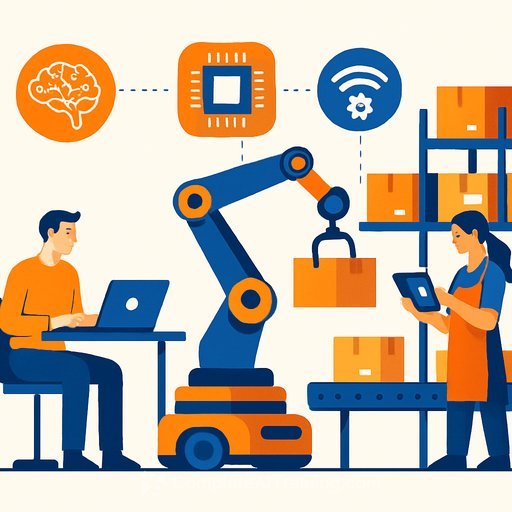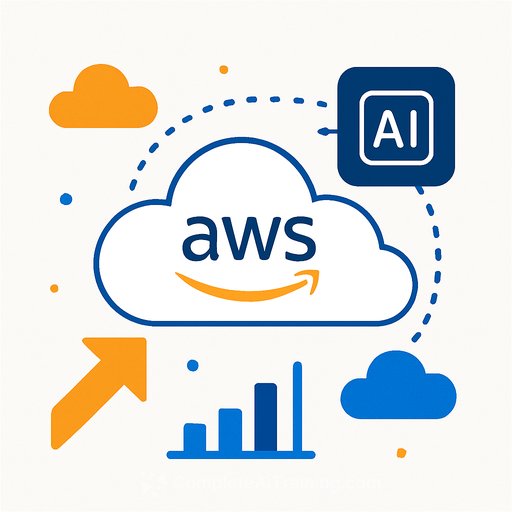Blue Yonder adds AI and unified decisioning to warehouse management
Blue Yonder has upgraded its Warehouse Management Solution with AI and unified decisioning to help operations leaders run leaner, faster and with greater accuracy. The focus: fewer silos, better forecasting, smarter orchestration and quicker responses to change across the warehouse.
As Blue Yonder's chief product officer Gurdip Singh puts it, many warehouses still run on disconnected systems and reactive processes. The new capabilities use cloud-native architecture and AI so teams can scale resources, act with precision and deliver stronger financial outcomes.
What's new - and why it matters for management
- Cloud-native platform with unified decisioning: Built on the Blue Yonder Platform with a true cloud architecture and an AI data cloud that breaks down silos. This enables end-to-end interoperability and orchestrated decision-making across systems.
- Warehouse Ops Agent (AI): An AI-driven agent that delivers dynamic daily briefs, monitors real-time changes and analyzes complex data in seconds. It surfaces patterns, disruptions and clear actions so managers can plan, adapt and decide with confidence.
- Resource Orchestration: Allocates people and equipment to the right tasks as conditions shift throughout the day. It accounts for priorities, skillsets, equipment permissions and bottlenecks to keep the workforce aligned with demand.
- Embedded warehouse execution system (WES): An AI-based execution layer that intelligently coordinates resources and tasks for smarter decisions, greater flexibility and higher throughput.
- Resource Forecasting: Predicts labor and equipment needs by role, task and zone-from weeks out to minutes before a shift. Uses machine learning, real-time updates and process variation data to improve forecast accuracy and shift readiness.
- Advanced Slotting: Moves slotting from reactive rules to continuous optimization. Real-time demand forecasts and ML predict order volumes and task times to set optimal slot counts and locations, cutting pick travel and boosting fill rates. AI agents provide insights and recommendations, and generate daily slot plans that reduce handling costs and improve space use.
- Unifying labor and automation: Faster onboarding for dozens of automation vendors. Real-time communication removes batching delays, flags automation failures and triggers retries or reassignment. Tracks robotics performance as autonomous or human-assisted for a complete view of productivity.
- AI-driven migration tools: Tools to smooth upgrades, reduce integration complexity and shorten deployment time-so customers can move faster with less disruption.
Impact you can expect
- Throughput and SLA adherence: Better orchestration and forecasting help keep pick, pack and ship on schedule-especially during demand spikes.
- Labor efficiency: More accurate staffing and assignment reduce idle time, overtime and rework, lowering cost per unit handled.
- Visibility and control: Ops Agent briefs and real-time monitoring give leaders a clear view of what's happening now and what to adjust next.
- Resilience: Faster detection of disruptions (equipment, inventory, inbound delays) with immediate alternatives to keep work flowing.
How to put this to work in 30 days
- Baseline the right KPIs: Start with units per hour, dock-to-stock time, pick accuracy, OTIF and overtime percentage.
- Pilot the Ops Agent: Use daily briefs and alerts on one shift or zone. Measure action-to-impact time and issue closure rate.
- Enable Resource Forecasting: Compare AI forecasts to actuals for two weeks. Use the forecast to adjust start times, headcount and equipment allocation.
- Turn on Resource Orchestration: Automate task assignment in a high-variance area (e.g., outbound). Monitor queue length, wait time and travel time.
- Run Advanced Slotting in a test zone: Implement daily slot plans and track pick travel distance, touches and fill rate improvements.
- Connect key automation: Start with one AMR or sorter integration. Validate that real-time exceptions trigger retries or reassignment without batching delays.
Integration and migration notes
Blue Yonder's AI-driven migration tools are built to reduce integration complexity and cut deployment time. For managers, that means shorter change windows, reduced risk during cutover and faster time to value.
Risk and governance
- Data quality: Forecasts and orchestration depend on clean task, inventory and equipment data. Assign ownership and run daily checks.
- Change management: Communicate new assignment logic and slotting rules to supervisors and associates. Provide quick reference guides at the workstation.
- Human-in-the-loop: Keep approval steps for high-impact changes (e.g., zone rebalancing during peak) until confidence is proven.
- Auditability: Log why the system made each recommendation. Use this for training, compliance and continuous improvement.
Helpful resources
- What "cloud-native" means for scale and reliability
- Upskill your team on AI for operations and logistics
Bottom line: If you're accountable for throughput, cost per unit and service levels, this upgrade gives you a clearer view, faster decisions and tighter execution. Start with one area, measure aggressively and expand based on results.
Your membership also unlocks:






